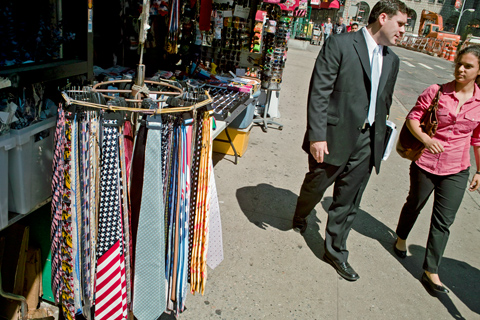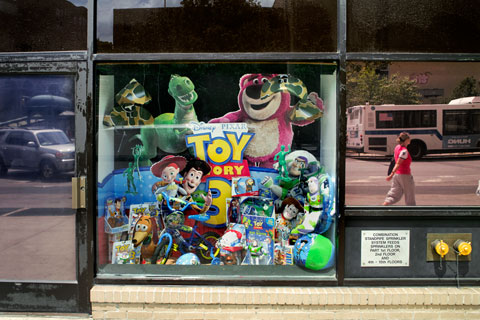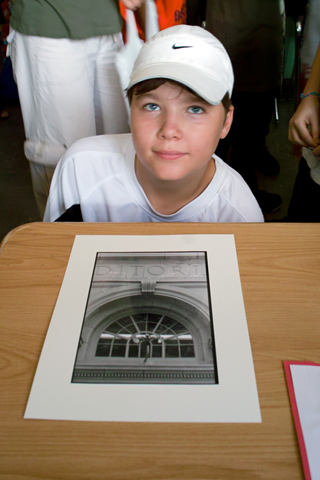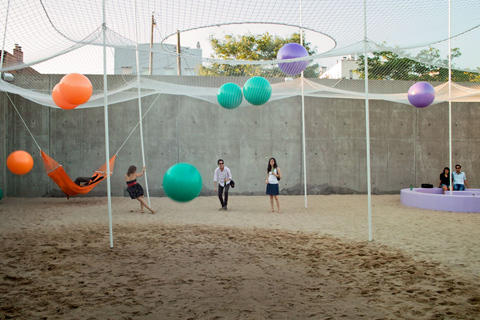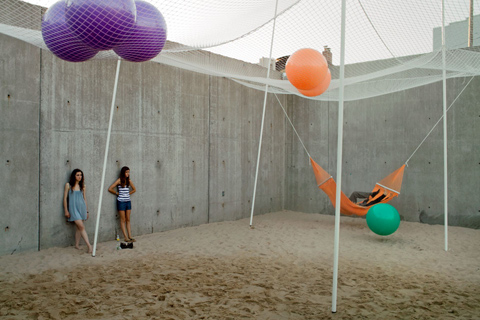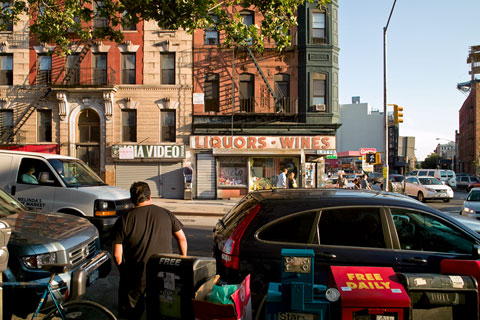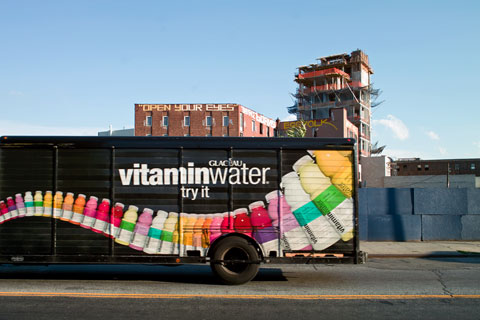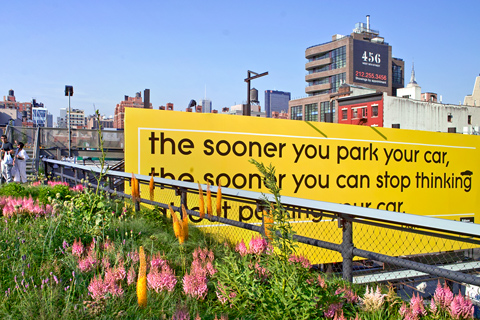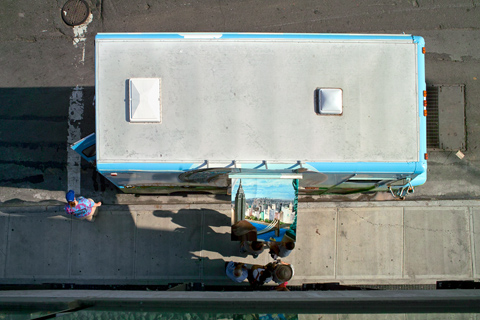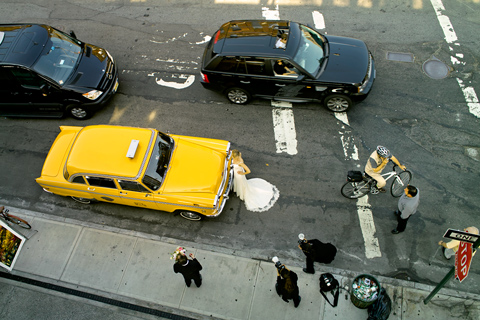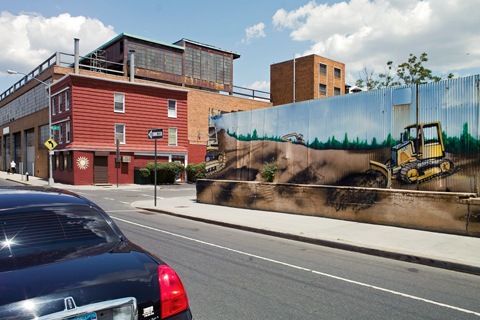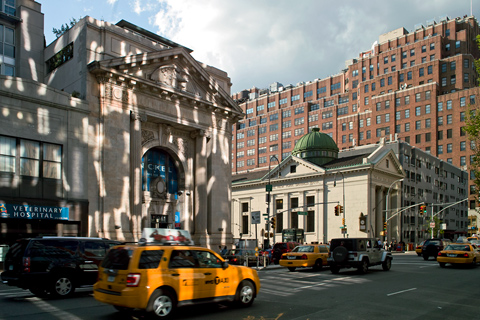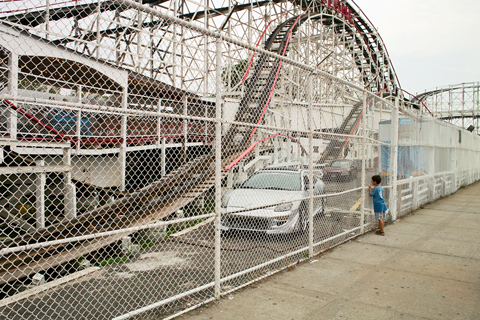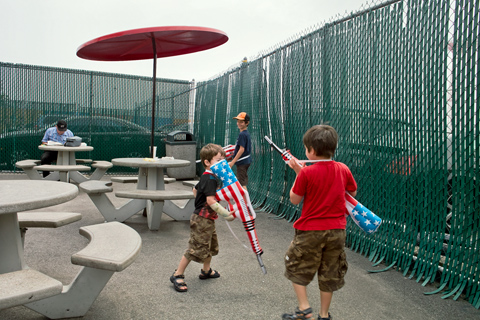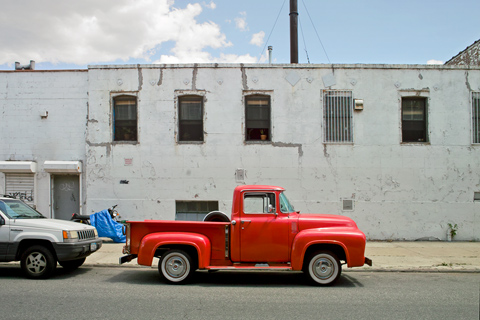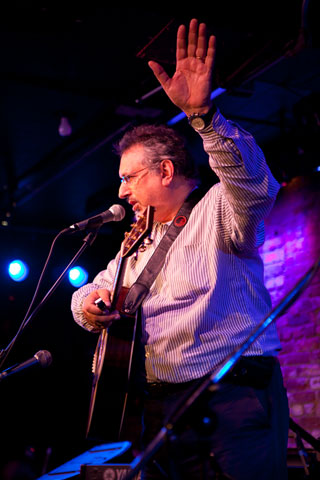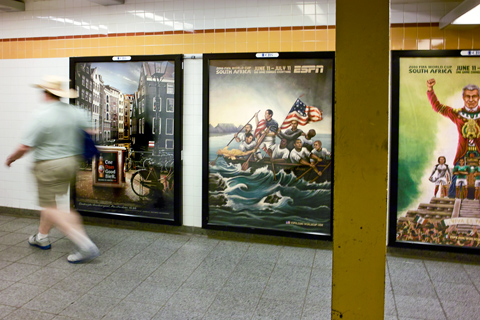Wearing my flag tie on the 4th.
New York/WTC
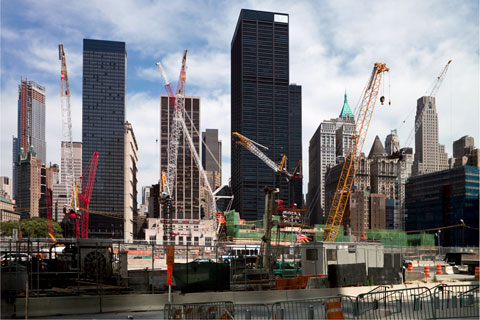
Ground Zero construction — © Brian Rose
The weather broke yesterday after days of temps in the 90s, so I decided to go down to the World Trade Center site for another round of photographs. This is my fourth or fifth visit with the view camera. The biggest difficulty for me is that there are few vantage points available for making photographs with a camera on a tripod. A small army of security guards working for various property owners and institutions enforces the one firm rule governing photography on “private” property–no tripods. Private is in quotations because there are so many areas that are ambiguous public/private realms with no signs or the signs that are there clearly state that the public is welcome. The public may be welcome. A hundred people could be simultaneously taking snapshots, but put a tripod down and you’re kicked out. It’s gotten so ridiculous that I usually just work quickly, get a shot or two off, and then leave once the nearest rent-a-cop springs into action. God help us if something really serious were to happen–these guys are useless.
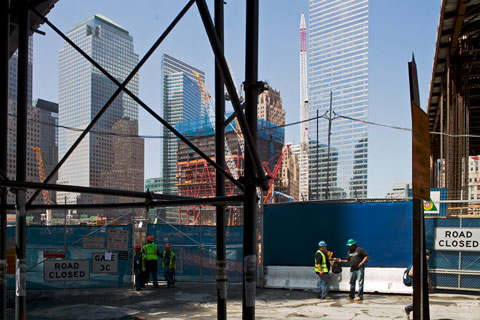
Liberty and Greenwich Sreet — © Brian Rose
Construction is in full swing across the site with 1 World Trade Center up 20 or more floors, and Tower 4 is also well above ground. The Calatrava designed transportation center is still mostly below grade, and the memorial waterfalls are not visible unless you go to a higher viewing level.
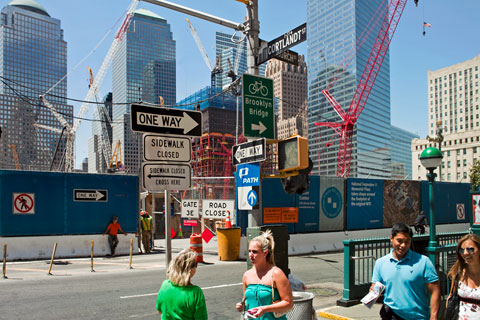
Cortlandt and Church Street — © Brian Rose
Tourist wander aimlessly about dodging construction equipment, navigating sidewalks to nowhere, reading a forest of contradictory signage, all the while attempting to see and understand what is going on.
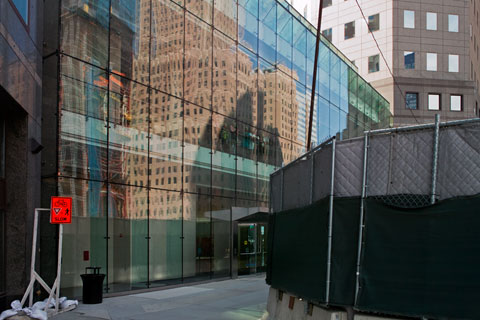
The Winter Garden, World Financial Center — © Brian Rose
The best place to see the whole site, though still not high enough, is from behind the glass wall at the top of the stairs in the Winter Garden of the World Financial Center. I did a photograph of tourists looking out from the Winter Garden–just managed get off one 4×5 image before being ordered to vamoose.
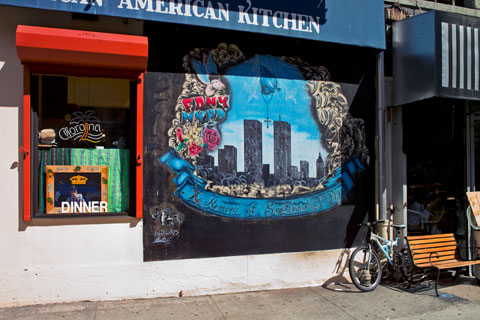
West Broadway and Warren Street — © Brian Rose
An unofficial Twin Towers memorial just to the north of ground zero. I was all packed up by the time I reached this spot, so I only shot it with my digital camera. But I will come back with the 4×5 in the future. Despite the difficulties of working around the WTC, I am getting good stuff. The idea is to come back from time to time, slowing building a series of photographs that documents the rebuilding and captures some of the craziness of the ground zero atmosphere. I have no doubt that when the memorial is completed there will be a ban on tripods, and I will be one of the last view camera photographers left.
New York/Astor Place
New York/PS 3
Brendan and photo at PS 3 — © Brian Rose
My son Brendan has just completed elementary school at PS 3 in the West Village, and we’re pleased that he will be attending the NYC Lab School in the fall. Our experience at PS 3 has been extraordinary, beginning with second grade when we arrived in New York from the Netherlands. Special thanks to Otis Kriegel, Bendan’s 5th grade teacher, one of a string of exceptional teachers we’ve had at PS 3.
One of the last projects Brendan did in Otis’s class was to take a photograph with black and white film, and then make a print in the darkroom. Although it isn’t necessary these days to work with film, one’s understanding of the nature of photography and its history is deepened by experiencing the whole process of shooting, developing, and printing. The magical moment an image appears in a tray of developer can’t quite be duplicated in digital photography, though digital has plenty of other kinds of magic to offer.
A few days ago I went to Brendan’s class photo show. Each student displayed a black and white 8×10 and a short description of what went into making his or her picture. Brendan, who has accompanied me on several photo shoots when working with the view camera, brought an architectural photographer’s eye to his choice of imagery. He photographed the arch above one of the doors to PS 3, perfectly composed, lines absolutely straight, despite being hand held.
New York/PS 1
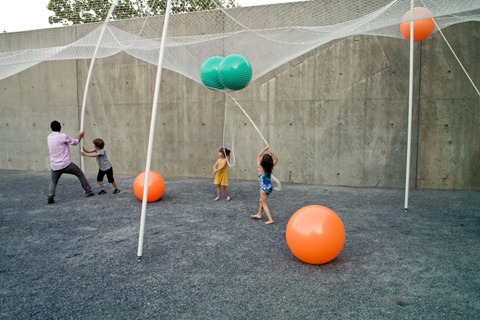
Pole Dance, PS 1 — © Brian Rose
Went to the opening at PS 1 in Long Island City of Pole Dance, by Florian Idenburg and Jin Liu, SO – IL (Solid Objectives – Idenburg Liu) winner of the 2010 MoMA Young Architects Program.
New York/Williamsburg
New York/Chelsea
New York/Looking Down
New York/Williamsburg
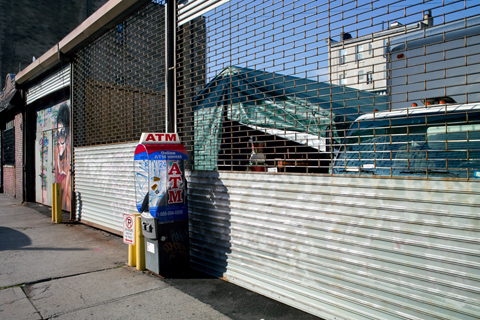
N3rd Street, Williamsburg, Brooklyn — © Brian Rose
Early morning in Williamsburg. Dropped off my son at school in the West Village. Last week before summer vacation. Email from Berlinsche Galerie. Polite, complimentary letter, but in short, not interested in my work. Picked up portfolio from MoMA, which is interested in my work, and met with curator. Talked about galleries and other career opportunities. Lugged portfolio case with 100 prints downtown via subway. Worked on design of Lower East Side book, which I might enter in the Blurb book contest. Honorable mention last year. Exchanged emails with education head at FOAM, the Amsterdam photography museum. She’s in New York. May meet tomorrow. No architecture client work on the horizon. Getting worried. Went home for dinner. Reading Grapes of Wrath to my son. Have seen the movie, but never read the book until now. Brilliant.
New York/Footprint

Feet on the street in New York — © Brian Rose
It’s been about five years since I discovered that my creaky knees–the result of years of playground basketball–felt better when I went without shoes–at least at home. Eventually, I came across thin soled shoes without arch support or cushioning, that were designed to allow for natural barefoot-like movement with a little protection. These were fairly conventional looking shoes unlike the foot gloves, Vibram FiveFingers, that have since become my standard gear (when not barefoot) for everything–walking, running, even lugging around my view camera equipment.
The knee pain is long gone, and I have acquired a lighter step, and much stronger, durable, feet and ankles. I’ve become so used to feeling the ground underfoot, that going back to padded shoes would be like robbing myself of a basic element of sensory perception.
So, where’s the scientific proof for all this? There are a number of recent studies that support the concept of barefoot running and walking, but, persuasive or not, I am going mostly by instinct and my own experience. For me, it’s been a game changer.
You Walk Wrong (New York Magazine)
New York/Williamsburg
New York/Greenwich Village
New York/Coney Island
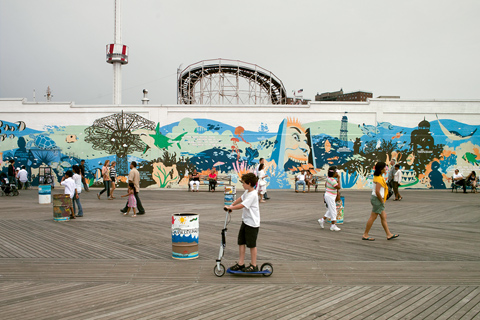
Coney Island boardwalk — © Brian Rose
It was a humid, though not particularly hot, day in Coney Island. Languid, drained of energy. Brendan rode the Cyclone with his uncle Willem visiting from the Netherlands. I declined. Took a few pictures around the roller coaster and up on the boardwalk. Had hot dogs at Nathan’s–boys with inflatable flag rifles playing. Showers moved in, and we retreated to the subway for the ride back home.
New York/Williamsburg
New York/Williamsburg
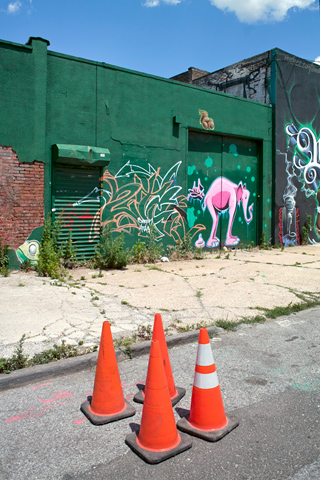
Williamsburg, Brooklyn — © Brian Rose
Not final until the acquisitions meeting in a few months, but I think I can safely report that the Museum of Modern Art is purchasing two of my prints. One from the Berlin: In From the Cold series, and one from Amsterdam On Edge.
Two very serious 4×5 pictures–unlike the orange cones and pink elephant above. But hey, can’t be serious all the time.
New York/Folk City
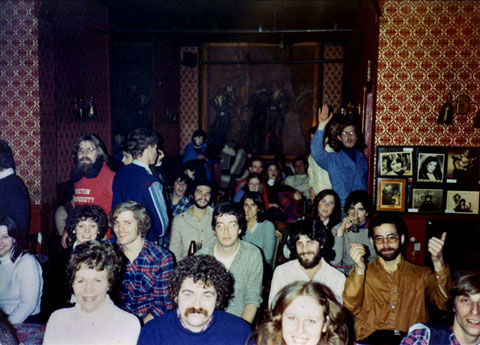
Folk City crowd in 1978 as seen from the stage — © Brian Rose
When I first arrived in New York in 1977 as a budding photographer and songwriter, I discovered Folk City, the club that was the center of the New York folk scene in the 60s. Bob Dylan, Joan Baez, Dave van Ronk, Phil Ochs and a host of others played the club and established its reputation. By the time I showed up looking for other songwriters and a chance to play, most of that older generation had moved on.
After playing the open mic (called the hoot) for a few weeks, and not hearing much to be inspired by, I began to wonder if the folk scene was permanently dead. One Monday at the hoot, while waiting for my number to come up, and my chance to perform two songs to a bored audience of other performers, a string of a dozen amazing songwriters went on stage and blew me away. One of them was Jack Hardy, the leader of the New York folk scene, and I recall that David Massengill and Rod MacDonald played as well. The inexplicable run of talent, I later discovered, was due to the fact that the hoot numbers were not exactly picked randomly, and once I became part of the Folk City family, I, too, benefited from the system.
The hoot numbers were distributed under the benevolent dictatorship of owner Mike Porco, who had started Folk City in 1960 at its original location on East 4th Street. Even after becoming a fixture of the Monday night hoot, Mike wasn’t sure I was ready for a gig –“you need a following”– but Jack persuaded him to let me play. So, my first gig was at Folk City, and I subsequently opened for a number of acts there, but never headlined. After Mike sold Folk City, I began to play at the Speak Easy, a falafel joint around the corner with a backroom performance space.
It’s been fifty years since Folk City was established. A couple of months ago, I was contacted by Bob Porco, Mike Porco’s grandson, about photographing an event he was organizing to celebrate the club’s anniversary. That event happened two nights ago, and the pictures that follow are random highlights from the show, a little skewed toward my generation of performers. The show took place in the basement of the last location of Folk City on West 3rd Street, a club now known as the Village Underground. Before the night was over, I was asked to play, and I took the stage and played my song Roll with the Wind (which I performed in my first gig at Folk City) accompanied by the incomparable Frank Christian and Mark Dann. I had a blast.
Check out these blogs:
http://www.folkcityatfifty.blogspot.com/
http://www.beachamjournal.com/journal/
http://ronolesko.blogspot.com/
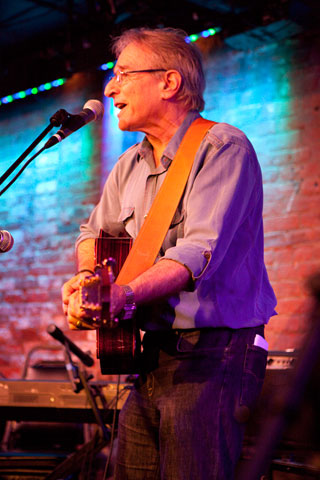
Happy Traum performing Dylan’s Buckets of Rain
— © Brian Rose
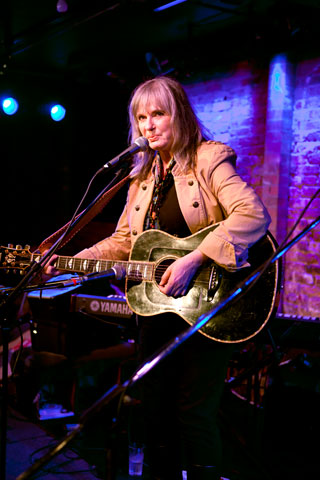
Sylvia Tyson performing her song You Were on My Mind
— © Brian Rose
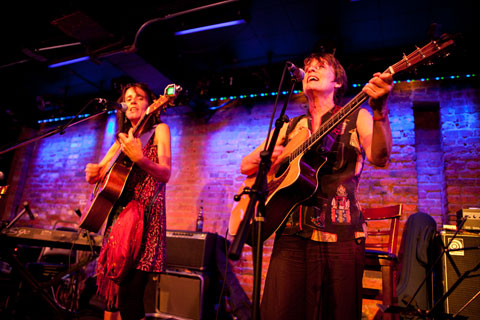
Suzzy and Terre Roche performing their song Face Down at Folk City
— © Brian Rose
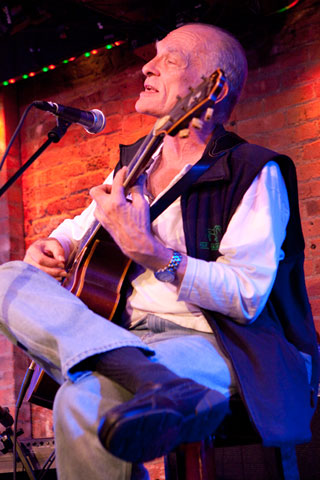
Erik Frandsen performing his song Unique New York
— © Brian Rose

Rod MacDonald performing his song Amercan Jerusalem
— © Brian Rose
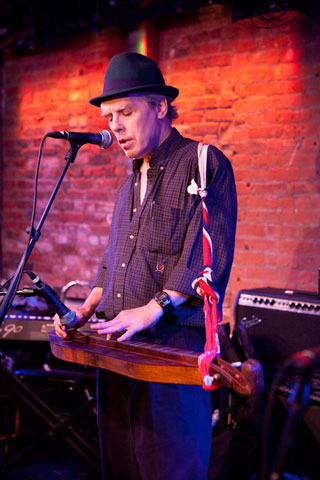
David Massengill performing his song On the Road to Fairfax County
— © Brian Rose
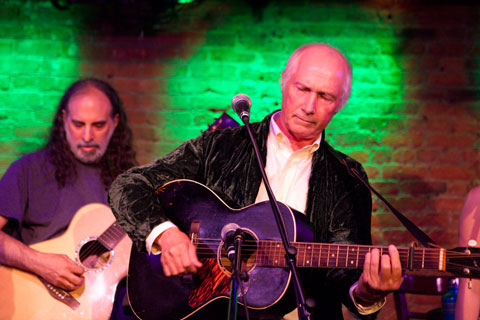
Jack Hardy with Mark Dann performing his song Go Tell the Savior
— © Brian Rose
New York/The Bowery

The Bowery (4×5 film) — © Brian Rose
Events are typically presented in photography or TV as spontaneous despite the fact that they rarely are. Most events are staged and the image makers oblige the image controllers by taking camera positions given them, and picture editors tend to use images that meet certain expectations of what events are supposed to look like, staged or unfolding spontaneously. Movie makers further create expectations of how events are experienced, how events are supposed to look, by carefully constructing experience as multi-view bursts of overlapping time, close up, stylized, and packaged.
But that is not the way events are actually experienced, at least from my perspective. Things happen or develop off camera and only briefly intersect with my consciousness–or lens. The putative event is often at a distance, fleeting, barely apprehended, elusive to the eye. Eyewitnesses are notoriously unreliable. They see what they think they see in the confusion of real time, the chaos of unfolding visual signals, unordered, unedited, unmediated. The camera is a dull witted eye.
President Obama’s motorcade drove through the Lower East Side, and swept up the Bowery. It was a passing incident noted by some, not by others. Probably unknown to him, he drove right by Shepherd Fairey working on a mural on the same spot where one of Fairey’s famous hope portraits was painted during the presidential campaign. A small crowd formed at the corner of Houston and Bowery awaiting the arrival of Obama. The police were, on the one hand, relaxed and blasé, as is typical of authority in New York. But on the other hand, a police truck was cruising up and down Houston Street clipping bicycles off of poles, tossing them arrogantly and carelessly onto a pile of dozens of other potential–pipe bombs??
I set up my view camera on the Bowery a quarter of a block from the corner in the midst of restaurant supply workers hauling stuff around on the sidewalk while some architects were discussing work for the interior of an art gallery. The motorcade approached, signaled by a few whoops of police cars, a hovering helicopter, some flashing red lights. The black cars and SUVs rounded the corner, and for a few seconds everyone turned, froze, and stared. Within seconds the event was over, the prosaic flow of work on the Bowery resumed. The most famous person in the world was a few blocks up the street, out of sight out of mind.
History witnessed.
